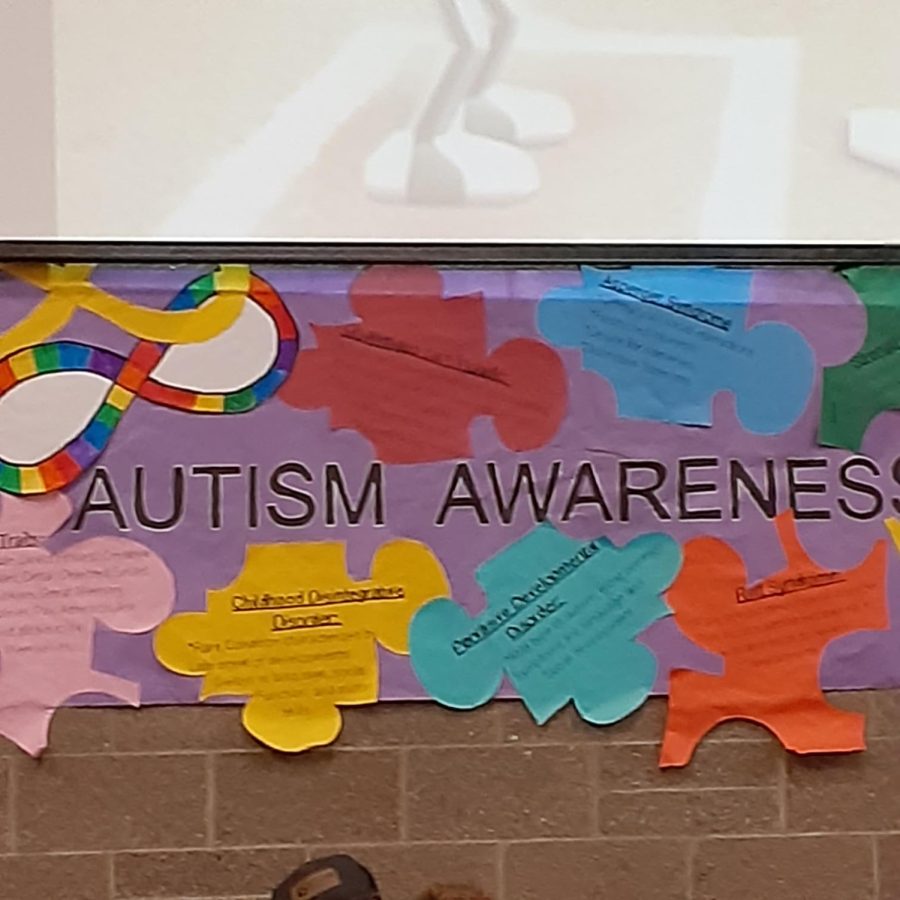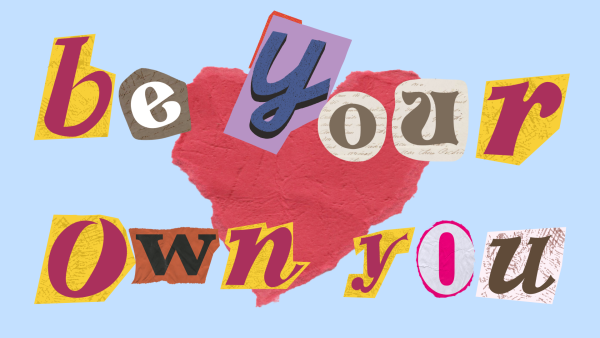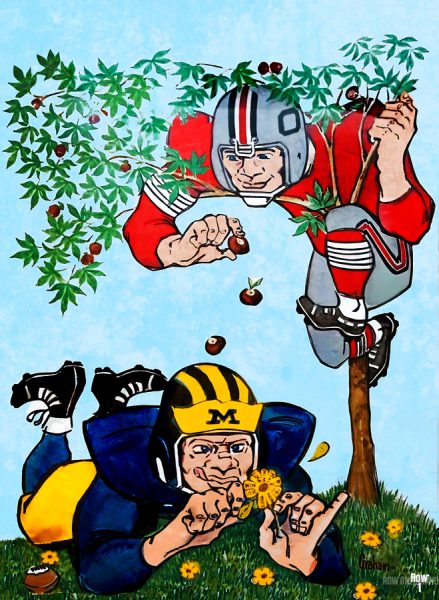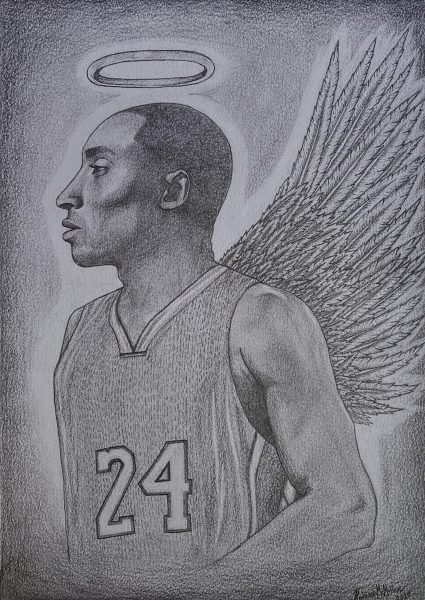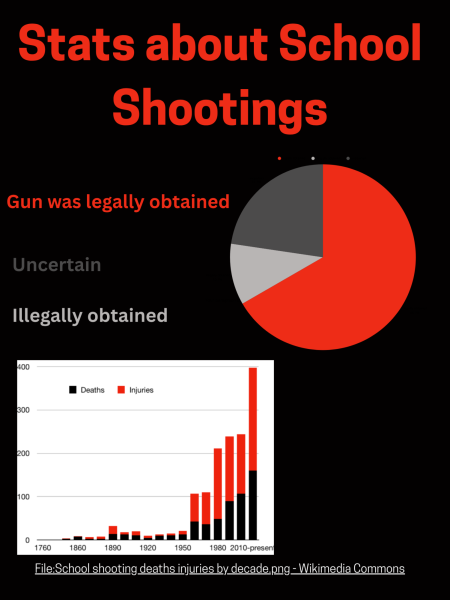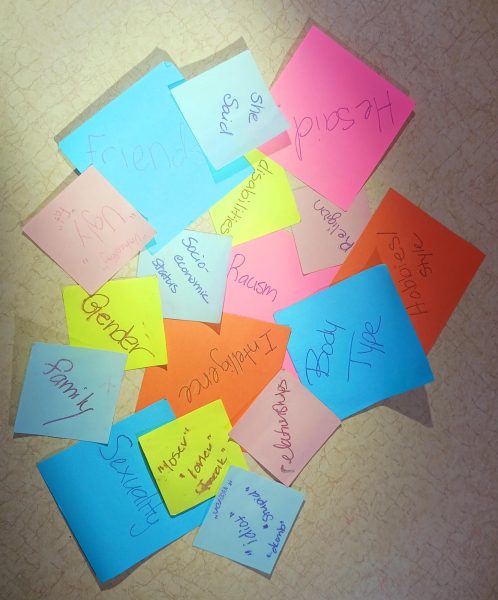What It’s Like to be Autistic in the Public School System
Autism, for as well known as it is, is sort of an elusive subject in the minds of the general population. Not many people are educated on it, and even more are grossly misinformed. Overall, our world is just not built for neurodivergent people. This creates a laundry list of struggles in the daily lives of autistic people.
Luc Glasco, a 19 year old autistic individual, and Arlington High School alumni, has a vast amount of commentary on how our world currently interacts with neurodivergence. They were diagnosed as autistic at age two, by the University of Washington. Given that this was in 2005, there were high levels of concern around the MMR vaccine and its hypothesized correlation to autism in children. “My mom did do some grieving, which can be debated on whether or not that’s an ok thing to do, but she did everything she could to make sure I was okay,” said Glasco.
Given that they received a diagnosis at such an early age, Glasco grew up with the knowledge that they were autistic, information about themselves that is not always available to all in the autistic community. Autistic people struggle in the neurotypical world no matter what, but growing up with the understanding that they had a less common neurotype meant that they were able to approach the world with the knowledge of how their brain works. This made the disparity between disabled and non-disabled worlds more apparent to them. As many disabled people do, they grew up to see the world and think about what it should have been, when they were a child. They would have benefited from “a society that recognizes that disabled bodies are a part of it,” said Glasco.
Alternately, in the context of school, they were often in distress or at least struggling from the way our education system is structured. “Having teachers that actually treat those with disabilities as still members of society [would have been beneficial.] And recognizing that not all disabled students are meant to be in ‘special education classes.’ I feel like so many teachers would’ve saved me from the suffering I endured on account of sh*tty staff if they recognized that they also need to know how to help disabled students, not just special education teachers,” said Glasco.
Unfortunately, in many cases for autistic students, education means more than just learning to read and write, but also how to mask, and act in a manner that is socially acceptable and hides one’s autistic traits. “It taught me what it means to mask. It showed me that masking is something I have to do if I want to survive,” said Glasco. “Elementary school wasn’t too bad since it was, well, elementary school. Most kids don’t care if you have any differences like that. Middle school there was a huge change in which I was constantly bullied for being unmasked. I was very vocal about my interests and that put me in a vulnerable position to get hurt. So I proceeded to mask.”
In the interest of protecting them from being unnecessarily placed in special education classes, or receiving different treatment from teachers, Glasco’s mom refrained from disclosing that they were autistic to school staff and administration. Unfortunately, this still left them vulnerable to other areas of socialization where autistic people are at a disadvantage. “Even without disclosing my diagnosis, I was still babied, disregarded, and thrown to the wolves really,” said Glasco.
Fortunately, there were areas of education that they felt were supportive to them. Following a transfer of schools to a smaller, more individualized place of education, Glasco found more comfort in the school environment. “Teachers are brought about only really being taught how to manage neurotypical/allistic students. It may be getting better as ableism is finally being treated with the severity it should’ve always been treated as,” said Glasco.
Glasco currently works at a library and has found an increase in books to prepare teachers to teach neurodiverse groups of students, which could be an indication of an improving environment for learning, but this doesn’t necessarily transfer from theory to practice. “I wasn’t particularly in the market for a 504 or IEP, but in general, one of those shouldn’t be needed for teachers to even bother to lend an ear and listen to disabled students,” said Glasco.
Public school is notoriously difficult for neurodivergent students, our experiences coming with a slew of stories about times our educators failed us. It is not a trend that is the fault of any one person, but rather an indication of a greater, and deeper systematic failure in the design of our K-12 education system. Modern American public education is not meant for disabled students, and no amount of goodwill from outstanding educators will change that. On top of that, our school system lacks general support for students’ mental health. Given that many schools lack the resources and practices to help more widely addressed personal issues such as depression or anxiety in students, then how can we expect them to support students with lesser known identities and needs? “It’s commonly known that counselors are only there to help with school and nothing else– but if that’s the case, why are we sent to them for help with mental health and the like?” said Glasco. “When I attended AHS, only one counselor had any psychology certification.”
This is dismal, even assuming that the staff and services provided are helpful to students in need. In cases where there’s little to no improvement when it comes to meeting a student’s needs, the outcome is often unpleasant at best. “I was constantly given band aid solutions to the problems I had,” said Glasco.
This hurts all students alike, but especially leaves disabled students reeling. School becomes a test of resilience, less about learning and more about getting to the end of the week, and maybe one day, a diploma. “I was finally switched about a month before the end of the school year, but it was already too late,” said Glasco. “I got tired of coming home from school and crying to my parents wishing I was ‘born normal.’ We went through with registering at Weston and that was probably the best decision of my K-12 career I’ve ever made.”
One thing Glasco did learn a lot about in K-12 is what changes would be helpful to disabled students. “Not all neurodivergent students are going to be in a special education class. You need to have teaching for EVERYONE within your curriculum. If you don’t, you have failed as a teacher. Although, I will give teachers the benefit of the doubt. The education system is ableist at its core,” said Glasco. “Still, more teachers desperately need to make an effort to be more inclusive to disabled students and make sure they’re heard and accounted for. This shouldn’t even be a request for counselors. From what I’ve heard, counselors are finally being required to get some sort of degree in psychology before becoming one. But it’s far too late for them to be implementing that now. It should’ve been there since the beginning.”
A common reason that accommodations are not given to students who need them, is the possible ways such accommodations could negatively affect other students. “When it comes to improving access needs, I’ve heard so many comments on people saying things like ‘well if one student gets to listen to music, everyone’s going to!’ or ‘we can’t have a sensory room/quiet room in our school, kids are going to abuse it and begin to skip class,'” said Glasco.
This stance of “no exceptions” is often the approach our society takes on issues with specialized care. It leaves many disabled people without the support they need, while also creating stigma and an atmosphere of avoidance around the issue. “The same goes for using headphones in class and having quiet rooms. Should that resource be taken away just because other people don’t need it or misuse it? It’s also very similar to fidget spinners and the grip they had on people in 2017. Many schools banned them and other fidget toys just because some misused them,” said Glasco. “Congrats! You just gave many disabled students a huge disadvantage to succeeding in school because you would rather prioritize neurotypical and abled students over the needs of disabled students.”
This leads into discussions about how much our society actually cares about helping disabled people. Corporations and public figures talk about helping those in need, but rather than acting out of genuine concern or with a true understanding, these motions are made to make them seem like they care. Building off of this norm, even those that DO care, or have a moderately solid understanding of the issues they are speaking about will often reject opportunities of growth or furthering their understanding due to their perception that they already understand enough. There are many areas of activism that outright reject criticism from the community they say they are supporting. Things as simple as using the correct symbols on media are disregarded for the preferred option. Autism awareness post by neurotypicals don’t offer support if they utilize harmful symbols or movements like the puzzle piece or Autism Speaks. “Even despite people claiming to support and uplift autistic folk and autistic voices, they still allow themselves to be ableist. It’s a similar case with many other things: corporations pretending to have always support gay people despite donating to the demise of gay rights, and people who prioritize saving the breasts of women rather than the woman herself when fighting to put an end to breast cancer,” said Glasco. “If society truly wanted to understand, then why is Autism Speaks still such a reigning voice in autism ‘advocacy’? Why do people still support eugenics and the curing of autistic people? Why do people still look at very outwardly autistic traits, make fun of them, and then claim they’re an ally and that they were just “making fun of the weird kid for being weird?” If it wanted to understand, Autism Speaks would have gone bankrupt by now.”
Even within the positive activist movements, most are still severely lacking in working to make people happy. Activism is often so focused on the basics, that the areas of life such as learning to have fun in your identity, learning how to connect with others, learning how to enjoy things even during hard times, are often left out. When it comes to autism inclusion, it’s making autistic people happy. Yes, accommodations and proper terminology is important for our well-being, but none of those things matter if your not balancing just living. “Autistic joy is so important,” said Glasco. “Autistic people fawning over their special interests shouldn’t be seen as ‘cringe,’ it should be encouraged. Stimming is still seen as a negative in the field of psychology, as psychology still tends to attribute stimming to things like hurting one’s self. It shouldn’t. It should be seen as something beautiful, a sign of happiness, a sign of self regulation, a sign of calm. So many behaviors that society sees as weird, cringy, or bad should be uplifted. It’s beautiful.”
As April has ended, and we move onto the next month of reflection, we need to remember that we are not done learning about the world. We are not done improving ourselves, and the spaces around us. If we stop working to be better, then we have failed, because the best may be unattainable, but being better is always an option. “Acceptance not for just accepting that autistic people exist in your lives, but accepting the quirks and traits brought about aren’t just ‘the weird kid being weird,’ but an autistic person experiencing autistic joy and that it’s okay for them to be ‘weird.’ Inclusion not in a way that you include the existence of autistic people into your thoughts, but you also include thoughts in regards to how things may or may not be accessible to them or include their voices into your conversations about neurodivergence,” said Glasco. “If you, an ally, want to support autistic people and protect them, don’t just do it in April. Do it 24/7/365. Not sure how? Ask. An autistic knows more about autism than anyone else, and that will always be the case.”




